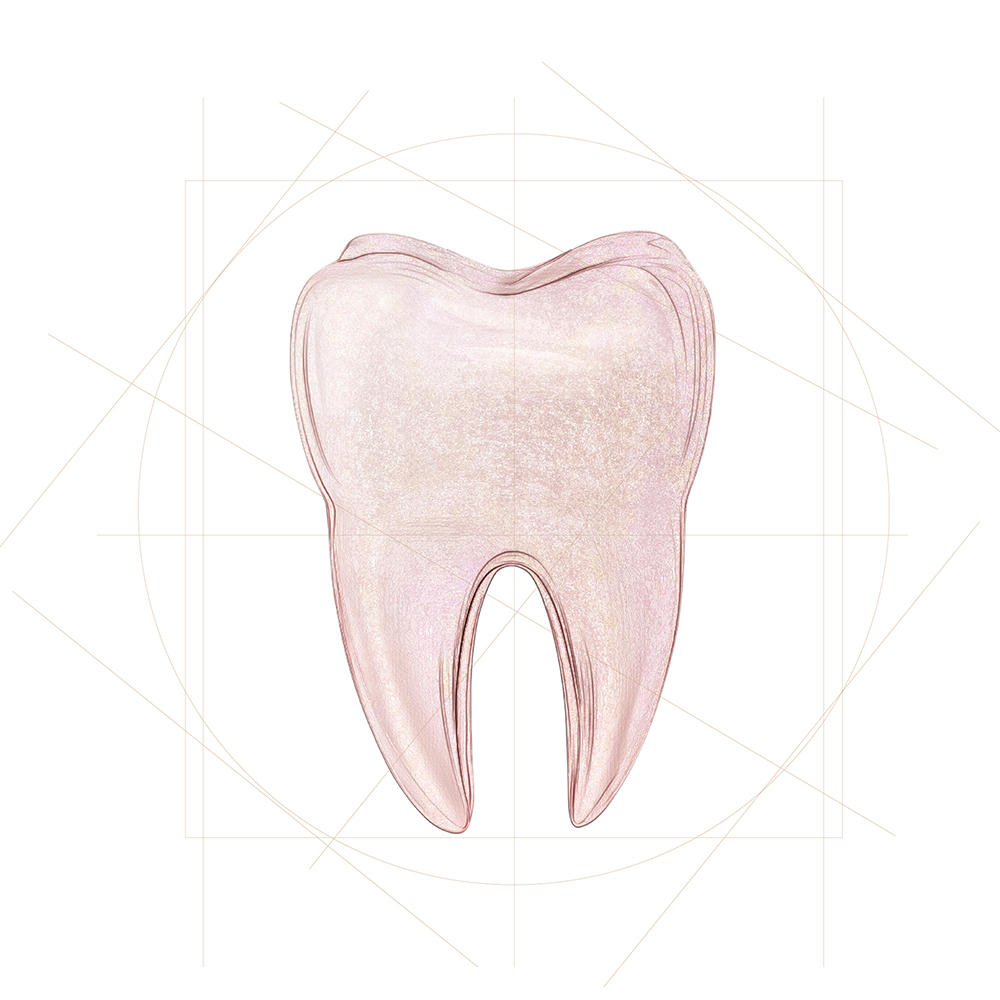Dental Filling
Dental filling (restoration) is a dental treatment procedure performed to fill the cavities in the tooth caused by decay, fracture or abrasion. The filling procedure aims to restore the natural functions and aesthetic appearance of the tooth. Dental fillings can be made with different materials and the type of material selected according to the patient’s needs affects the treatment process and results.
How is Tooth Filling Performed?
Examination and Tooth Preparation
The dentist will examine the decayed or broken tooth and, if necessary, take X-rays. To clean the decayed or fractured area, the decayed tissues around the tooth are scraped off.
Cleaning the Tooth
After the cavity part of the tooth is cleaned, cleaning is performed to remove microorganisms and bacteria.
Filling Material Selection and Application
A filling material is placed in the cleaned area. The filling material can be one of various materials such as composite resin, amalgam, gold or ceramic. Aesthetic fillings such as composite resin mimic the natural colour of the tooth and are preferred for appearance.
Forming and Hardening
After the filling material is placed, it is moulded to take the natural shape of the tooth. Composite fillings can be light-cured, so the dentist can complete the procedure quickly.
Final Touch-Ups and Polishing
The filling is harmonised with the normal shape of the tooth. Finally, the tooth is polished to give it a smooth and natural appearance.
Aesthetic Composite Fillers
Aesthetic composite fillings are resin-based filling materials with tooth-compatible and transparent properties used to mimic the natural colour of the tooth. These fillings are especially preferred for front teeth because they provide treatment without disturbing the aesthetic appearance of the tooth. Composite filling is very popular in terms of aesthetics because it can shape the tooth, change the colour and offer a natural appearance.
Properties of Composite Fillers
- Natural Appearance: The colour can be selected, it provides a natural appearance as it is compatible with the colour of the tooth.
- Easy Application: Composite fillings are very flexible in terms of shaping the tooth. In this way, it is easy to correct the tooth functionally.
- Light Curing: Light-curable composite fillings allow the process to be completed quickly.
- Durability: Composite fillings, although they have sufficient durability, may in some cases have a shorter life than more durable materials such as amalgam or zirconium.
- Caries Detection: Composite fillings can be detected by X-rays, but they look like natural teeth, which provides an aesthetic advantage.
Composite Bonding (Bonding Application)
Composite bonding is a treatment method used to improve the aesthetic appearance of the tooth, applied directly to the tooth. Bonding is done by adding a thin composite resin material to the tooth. This method is usually used to correct small cavities, fractures or gaps in the tooth.
How is Composite Bonding Performed?
Preparation of the Tooth
No major abrasion or cutting is performed on the tooth for bonding application. The surface of the tooth is slightly roughened.
Bonding Agent Application to Teeth
A special bonding agent is applied on the tooth. This substance ensures that the composite resin adheres to the tooth.
Application of Composite Resin
The composite resin is applied to the tooth and shaped according to the natural shape of the tooth. The bonding is placed so that it fits the tooth perfectly.
Light Curing
The applied composite resin is light-cured, so that the material fits snugly against the tooth and becomes strong.
Shaping and Polishing
After bonding, the shape and size of the tooth is regulated. Finally, the tooth is polished to give it a natural appearance.
Advantages of Composite Bonding
- Fast and Easy Application: Bonding application can usually be completed in one session, which provides an advantage in terms of time.
- Aesthetic Visual: Composite bonding provides a natural appearance by being applied in colours compatible with the tooth.
- Minimal Intervention: Only a small abrasion is performed, preserving most of the tooth. This makes the treatment less invasive.
- Low Cost: Bonding usually offers a more cost-effective option and provides aesthetic results.
Dental filling treatment is an important treatment method that improves the health and aesthetics of teeth.
Aesthetic composite fillings are one of the most preferred filling types with their natural appearance and functional benefits.
Composite bonding offers a solution that improves the aesthetics of the tooth with fast and minimal intervention. Both methods treat the natural appearance of the tooth, but which treatment will be applied is determined by the dentist according to the condition of the tooth and the needs of the patient.
Yes, tooth filling is usually completed in one session, approximately 30 minutes to 1 hour. The procedure time may vary depending on the size of the decay and the type of filling. Composite bonding is similarly applied quickly, in a single session.
Not eating until the numbness passes: Local anaesthesia is usually applied during filling. Take care not to eat anything before the numbness passes, because in this case you may unintentionally bite your tongue or cheek.
Avoid hard foods for the first 24 hours: It may take some time for the filling material to fully harden. Therefore, avoid hard, sticky or hard-to-chew foods (such as chewing gum, caramel) that may strain the filling.
Beware of Hot and Cold Sensitivity: Your tooth may be sensitive to hot or cold food/drinks for a few days after the filling. In this case, staying away from extremely hot or cold things will make you comfortable.
Paying Attention to Oral Hygiene: Continue brushing and flossing as normal, but be careful not to put too much pressure on the filling area.
Consulting a Dentist in Case of Pain or Discomfort: Mild sensitivity is normal, but if there is severe pain after filling, dislocation of the filling, or a sharp edge sensation, consult your dentist immediately.
Going for a Check-up: If your dentist has scheduled a check-up appointment, do not neglect to keep it.
Yes, since composite fillings are hardened with light, you can eat immediately after the procedure. However, it is recommended to be careful until the anaesthesia wears off (1-2 hours) so that you do not bite your cheek or tongue. For other types of fillings such as amalgam, it may be necessary to wait a few hours.
No, composite fillings are selected and applied to match the natural colour of your teeth. You can discuss the desired colour shade with your dentist before treatment. However, over time, colouring substances such as tea and coffee can cause slight discolouration on the surface, in which case they can be corrected by polishing.
No, composite filling is not an alternative to tooth extraction. Extraction may be necessary if the decay or damage has progressed to the internal structure of the tooth (pulp) and cannot be saved. Composite filling is used to protect the tooth in case of more superficial damage. Your dentist will assess the situation and determine the most appropriate treatment.
No, when applied correctly, dental filling or bonding does not adversely affect your gums. The materials used are biocompatible and harmonise with the gums. However, if gum sensitivity occurs during filling or bonding, this is a temporary condition and returns to normal within a few days.
Yes, composite fillings and bonding usually last 5-10 years; this period depends on your oral hygiene, eating habits and how well you take care of your teeth. You can extend its life with regular tooth brushing and dentist check-ups. If wear or breakage occurs, it can be easily replaced.


